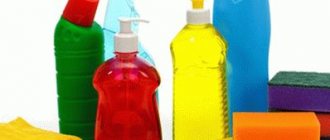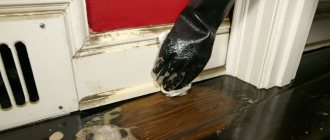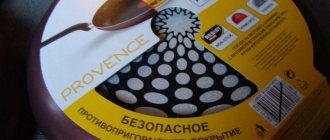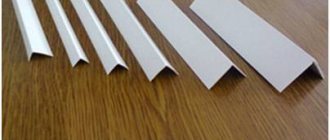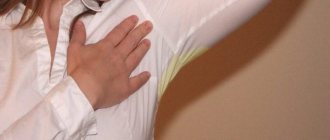Cleanliness in the kitchen depends on many factors. Most housewives monitor the condition of the floor and work surfaces, wash dishes and wash textiles on time. How long ago have you assessed the appearance of your window sill?
In the kitchen, the window sill gets dirty many times faster.
A dirty window sill can radically ruin the appearance of the kitchen. However, its care may vary depending on the material chosen. In this article we will talk about how to wash dirt off a plastic window sill and keep it spotlessly clean without much effort.
Types of stains on windowsills
First of all, you need to figure out what stains may appear on a plastic window sill . By knowing what to watch out for, you are more likely to prevent them from occurring.
Different stains can be washed off using different methods.
- Do you have flowers growing on your window? You will likely have to spend a lot of time dealing with the yellow spots that inevitably appear after watering if the pots are not airtight.
- Have you recently replaced a window? You will have to deal with drops of primer, pieces of polyurethane foam and other traces of installation work.
- After the winter period, stains from glue and adhesive tape will probably appear.
- Sintepon crumbs can stick to fat, and it will be very difficult to wash such a formation.
- Dirt coming from the windows can leave marks on the surface of the window sill.
- Do you often place pots and plates on the windowsill? There will probably be greasy stains , which are not so easy to remove.
- Even on plastic, traces of rust can accumulate , which “crawl” there from metal elements.
In addition, if the kitchen is small, many housewives use the window sill as an additional work space. This also negatively affects its cleanliness, and it is almost impossible to predict what stains will appear there.
Now let’s take a closer look at how to deal with each type of window sill contamination.
Getting rid of yellowness with chemicals
It is also worth knowing how to whiten plastic windows from yellowness using chemical reagents.
Special napkins
In the store you can purchase wipes for caring for household and computer equipment. They also perfectly clean plastic surfaces, as they are impregnated with special units. You will have to wipe off dirt on the windows four times a day until the surface regains its original appearance.
Solvent
It should be used carefully, without touching the rubber parts. Apply to a freshly washed and dried profile.
Caring for a plastic window sill at home
As we have already said, it is easier to prevent serious contamination than to try to remove it later using a variety of methods. To prevent window sill care from becoming an impossible task, we recommend that you read our tips .
Many stains are easier to prevent than to remove.
They will help you keep your window sill in order and prevent most troubles from occurring.:
- First of all, you need to find out what material your window sill is made of . For plastic ones, material of two structures can be used: smooth and porous. The first one is easier to care for, since it is enough to simply wipe it. Dirt and grease penetrate deeper into the porous structure, so you will need special detergents.
- A plastic window sill can be finished with either a thin PVC film or a wear-resistant laminate film. The second option is preferable for the kitchen: it is less susceptible to mechanical damage, which means that it can be washed with hard sponges and more effective means.
- Do not place hot pots and pans on the windowsill - they leave unsightly marks, and the surface may be damaged and you will have to repair the window sill.
- It is better to install special stands or place thin silicone mats under the flowers. This way, the pots will not leave scratches and less moisture will get onto the windowsill, which means you can avoid yellow stains on the surface of the window sill.
- Wipe the window sill with a dry cloth every day, even if it seems clean to you. This way you will remove the smallest particles of dust that eat into the coating and turn it from white to dirty gray.
- Once a week, wash the window sill with a soap solution and then wipe dry with a clean cloth . This will help wash away small particles of fat, which can soon turn into stubborn stains.
- Wash the glass and the spaces between them regularly - if they themselves are not very clean, they can become a serious source of dirt for the window sill. Therefore, do not forget to keep the entire window opening clean, and not just the part that faces your kitchen.
- Never scrub the window sill with abrasives too much! This way you can wear off the protective top layer of the coating and it will turn yellow or gray.
- Have you bought a new detergent ? Be sure to check it on an inconspicuous area of the window sill: if it contains aggressive chemicals, the color of the coating may change in the most unexpected direction.
With our tips, keeping your window sill clean will be a snap. What to do if there are stubborn stains on the windowsill that cannot be washed off with water and soap? Here are some effective recommendations that will help remove any dirt from a plastic window sill.
If the plastic has turned yellow: 10 surefire ways to return it to its original whiteness
Receive one of the most read articles by email once a day. Join us on Facebook and VKontakte.
Today we have already stopped noticing the plastic products around us, because it has largely replaced metal, wood, glass, even down to machine parts and mechanisms. Despite its capabilities and universal characteristics, it has a very unpleasant property - turning yellow when exposed to sunlight and heat. The following 10 reliable methods will help restore the original whiteness of all plastic surfaces without much expense or effort.
Although products made from natural materials are in fashion these days, plastic has penetrated our lives to such an extent that we don’t even notice it until it loses its original appearance. This popularity is due not only to its low cost and availability, but also to its unsurpassed characteristics: strength, wear resistance, water resistance, resistance to aggressive environments. But, despite all its versatility, does it also require proper care? and if such a nuisance has happened - yellowness has appeared, then it is necessary to deal with it in a timely manner.
But first, a few words about how to properly care for plastic products, so that later there will be fewer problems with eliminating the unpleasant consequences of careless management:
- do not smoke in a room with office equipment, plastic windows and panels, as well as other plastic objects and products; — to remove dirt, you cannot use detergents containing any abrasive; - for washing, use only soft sponges or brushes, as well as fabric napkins without a hard base; — after cleaning from dust, dirt or grease, wipe the products with an antistatic agent or use special detergents and cleaning agents intended for plastic products; — after each wash, thoroughly wipe all surfaces dry, because wet plastic tends to attract dust, and your efforts will be in vain.
The following tips will help restore plastic to its original whiteness, if it is not older than your grandmother or until irreversible structural changes have occurred.
The main thing is to remember that all these products can have a very detrimental effect on your health and you will not be able to work without gloves; it is also better to carry out all manipulations in a ventilated area and avoid contact with your eyes and mouth, especially if you work with aggressive chemicals! Let's start with cheap funds that are in every home, or acquiring them will not be difficult.
Method 1. Wash the window sill with laundry soap
If regular liquid soap or dishwashing detergent does not help, take the familiar brown bar of laundry soap. It contains more alkali, so it copes well even with greasy stains on a plastic window sill.
An old but effective way to clean a windowsill.
Grate the soap and dissolve in warm water. Then wash the window sill thoroughly. If old grease stains do not come off, moisten them with water and scrub well with soap. Leave it on for half an hour and then wash it off.
Not too old stains will come off. This method is one of the safest and most environmentally friendly.
Advice from the author : You should not use modern laundry soap in liquid form. It is much less concentrated, and therefore the effect will be weaker. And its cost is several times higher. It's better to buy a traditional bar, even if it doesn't smell very nice.
Acetone
In this case, the most dangerous drug for your plastic is one that can dissolve some types of plastics. To avoid this kind of damage, soak a cotton pad in acetone and make a few strokes on a small area in an inconspicuous place with a quick movement; if everything works out, then with active movements from top to bottom, wipe the yellowed areas, and then rinse thoroughly with water. Just remember to ventilate and wear thick rubber gloves!
Method 2: Wash the window sill with washing powder
Soap doesn't work? Use a more effective product - washing powder. It will not only remove stains, but also help whiten the surface a little.
Choose hand washing powder with bleaching properties.
Sprinkle a little powder on the surface, a little more directly on dirty areas. Use a wet, rough sponge to rub the stains first, and then the entire window sill. Rinse off the soap suds thoroughly with clean water. Then wipe dry.
This method is not suitable for window sills covered with PVC film - the hard side of the sponge can leave scratches on them.
Tip from the author: If you are using laundry detergent in the washing machine rather than hand washing, be sure to use gloves. Otherwise, you may get serious irritation, since the substances in such powders are quite aggressive.
Perhydrol (30% aqueous hydrogen peroxide solution)
This drug can be bought at any pharmacy, but when working with it, take special precautions - avoid contact with eyes and wear thick rubber gloves. If this is a ready-made solution, then simply moisten a soft sponge and wipe the yellowed areas several times, then rinse thoroughly with water (be careful, perhydrol tends to get very hot!). If this is a tablet form (hydroperide), then dilute it as indicated in the instructions and do the same.
If you are not pleased with the result, then add 2 tbsp to 1 liter of water. spoons of perhydrol 30% and how much bleach or stain remover (make sure that the perhydrol does not heat up during operation!). With all precautions, thoroughly treat heavily soiled or yellowed surfaces. Then wipe everything with a sponge soaked in clean water, and then dry. This method has proven itself to be the best for cleaning the inside surface of a microwave oven.
Method 3: Wash the window sill with window cleaner
Most glass cleaners also work well on stains on the windowsill, excluding old greasy stains. Their ease of use can be considered a plus - most of these detergents are sold in convenient bottles with a spray bottle.
This product will clean not only the glass, but also the window sill.
Therefore, you just need to spray the product onto the stain, wipe the stain with a soft cloth, and then rinse the area with clean water. For stubborn stains, leave the detergent on for a few minutes before washing.
Advice from the author: The convenience of spraying is at the same time the main disadvantage of this method. Small particles of the spray enter the air and scatter throughout the room. Therefore, this method is not the best choice for the kitchen. Unless, of course, you want to season some dish with glass cleaner or enjoy Sea Fresh flavored salt.
Hydrogen peroxide (3%) and hair lightening agent (6-9%)
If everything is not completely neglected, then hydrogen peroxide itself will be enough, with which we wipe all yellowed areas with a cotton pad or sponge (depending on the area). One procedure cannot be done here; such manipulations must be carried out from 3 to 5. If the result still does not suit you, then add 2 tbsp to 1 liter of water. spoons of hydrogen peroxide and hair lightener, thoroughly wipe the surface with a moistened sponge (with gloves!) and its whiteness will again delight you as before. If you want to know for what other purposes this cheap drug can be effectively used, take a look at the Novate.Ru page, you will be surprised at a lot.
Method 4. Clean the windowsill with vinegar
Oddly enough, vinegar is considered one of the most effective methods for cleaning window sills. It dissolves greasy stains quite well, helps get rid of rust and slightly brightens the window sill.
Vinegar removes even old stains.
Dilute vinegar in a one to one ratio and apply to the windowsill. Moisturize stains well, especially old ones. Leave the solution for 10-15 minutes. However, please note that in the case of PVC film, especially colored film, you need to act carefully - vinegar can change the color of the surface.
Carefully rinse off the solution and wipe the window sill dry. If necessary, the procedure can be repeated.
Advice from the author : Acetic acid has a negative effect on the skin of your hands, so do not forget to use gloves.
Chlorine bleaches or stain removers
Such products must be used very carefully and carefully (remember personal protective equipment and try to avoid inhaling vapors). Naturally, we do not take pure bleach or white, but chlorine-containing bleaches or stain removers at the rate of 1 tablespoon per 1 liter of water. Soak the plastic elements in this solution for 10-12 hours, then rinse thoroughly and do not forget to wipe.
Method 5. Remove dirt from the windowsill with a melamine sponge
Several years ago, melamine sponges became a real hit among housewives. It is enough to simply run a moistened sponge over the stain - and it will dissolve almost before your eyes.
The melamine crystals that make up the sponge literally dissolve dirt.
Outwardly, they are similar to the usual foam sponges, but have a slightly more durable structure and seem a little damp to the touch. Melamine really does a good job of scrubbing off any dirt, but for old stains you will have to make a significant physical effort.
Advice from the author: Unlike foam rubber, melamine cannot be called a material safe for human health. Therefore, wash the window sill thoroughly with clean water after finishing cleaning. In addition, the sponge may crumble during use, so carefully remove any crumbs so that they do not get on your dishes or food.
Method 6. Making a PVC paste to clean the window sill
The name sounds mysterious, but in fact the mixture consists of only two components - toothpaste and chalk. Due to its abrasive properties, this composition cleans stains well, while at the same time brightening the window sill.
Time-tested method.
Mix the ingredients in equal proportions and do not forget to crush the chalk well: large grains easily leave scratches.
Apply the mixture with a damp soft sponge, lightly rubbing into the window sill. After all the dirt has been removed, rinse the surface with clean water and wipe dry. Repeat if necessary.
Advice from the author : The paste should be the most ordinary, plain. Otherwise, you may get a completely unpredictable effect.
How to remove blackness on windows and sides of walls?
We installed plastic windows and beauty began. As soon as the cold weather set in, blackness began to appear on the walls of the windows and on the windows themselves.
Blackness around windows is caused by fungus. In order to get rid of it, you first need to get rid of excess moisture in the room. To do this, you can use a desiccant; it is sold in hardware stores. You can also try drying the surface with a heater. After this, you need to treat the surface with an antifungal agent and then carry out cosmetic repairs.
Method 7: Mixture of vinegar and baking soda to remove old stains
If you need to remove an old, stubborn greasy stain, you can do without special detergents. Start by applying a thin layer of baking soda to the dirt using a damp sponge.
A mixture of baking soda and vinegar for the toughest stains.
Then add a little vinegar to the powder. Wait for the chemical reaction to complete. Carefully remove the mixture along with any loose dirt. Repeat if necessary.
Advice from the author: The mixture is quite aggressive, so try not to use it unless absolutely necessary.
Various alcohols
Due to the fact that plastic does not react chemically with alcohol solutions (methanol, ethanol, isopropanol, etc.), they can be safely used to whiten yellowed stains. But to be sure of a successful outcome, it is better to check the reaction of a particular plastic surface to such a radical substance. To do this, walk (with rubber gloves!) over the most inconspicuous area with a cotton pad soaked in alcohol; if everything goes well, then you can safely wipe all the yellowed areas. There is no need to rinse off alcohol solutions, but the room must be ventilated.
How to clean a window sill after renovation
All of the above recommendations are good if you need to remove stains that have arisen during the cooking process in the kitchen. But what if the problem is more serious than ordinary household pollution?
Repair work leaves a lot of stains on the windowsill.
For example, if you need to wash a plastic window sill after repair work. Proceed as follows :
- Remove all plugs , as a lot of different dust usually accumulates under them. To begin, thoroughly vacuum the window structure, then wipe the surfaces with a damp sponge, paying special attention to the dirty areas.
- If there is any primer, putty or plaster left on the window sill, remove the residue with abrasives . You can use a special cleaner from the hardware store or use a mixture of baking soda and vinegar - both methods will be quite effective if not much time has passed. But after a few days, only professional solvents will help you, which are not cheap - keep this in mind. Apply the selected product for half an hour, then remove with a rubber spatula or just a wooden spatula. Rinse off any remaining residue thoroughly with warm water.
- If there is foam left on the window sill, use a stiff brush - with its help you can easily remove dirt. Remains of construction dirt can be easily washed off with a solution of laundry soap.
Adviсe
A few tips will help you wash your windowsill quickly and efficiently:
- Before you start cleaning the window sill, you need to remove the plugs from the sides. This will help avoid the accumulation of small particles of dirt at the junction of two surfaces.
- Vegetable oil will help remove traces of tape from plastic. It is enough to thoroughly wipe the stain with a sponge soaked in oil and not a trace of dirt will remain.
- Drops of polyurethane foam can be used to clean the Dimexide medical solution. The foam is first cut off with a sharp stationery knife, and the remaining traces are generously moistened with Dimekisdom. After five minutes, wipe the surface clean with a damp cloth or sponge.
- Glossy surfaces of a plastic window sill should only be wiped with soft cloths. Rough matte window sills can be cleaned with a soft brush or sponge.
- A toothbrush dipped in soapy water will help remove all dirt and dust from hard-to-reach places: in corners and under the windowsill.
You will find a lot of important and useful information about fast and effective window cleaning in this section.
How to whiten a yellowed window sill
Under the influence of constant sunlight, changes in moisture and temperature, the window sill can lose its brilliant white color and take on a repulsive yellow tint.
Whitening a yellow window sill is quite possible.
Fixing the problem is not difficult if you use the following recommendations:
- First of all, make sure that the yellowness is a consequence of a change in color, and not of dust and dirt on the windowsill. In the second case, it is enough to wash it properly to get rid of the problem.
- If washing does not help, use rubbing alcohol. Apply it to a lint-free cloth and gently wipe the surface. Don't rub too hard as this can damage the plastic coating.
- Some people use acetone to lighten plastic window sills. The method cannot be called safe - this way, of course, you will remove the yellowness, but there is a high probability that it will happen along with the top layer of plastic.
- Try mixing soda ash with washing powder in a one to one ratio. Apply the mixture to the surface and leave for two to three hours, then rinse with warm water. The window sill should lighten.
Adviсe
To avoid problems with a dirty surface, you need to follow simple rules that will protect the integrity and aesthetic appearance of the window sill:
- To prevent dirt from becoming embedded in the plastic, any contamination should be cleaned immediately, without delaying cleaning. This rule applies even to accidentally spilled clean water. When the water dries, it leaves unsightly yellow spots.
- When using any cleaning agent or detergent, after applying it to the contaminated surface, you must wait for some time for a chemical reaction to occur between the cleaning agent and the dirt. Then cleaning will take much less time and physical effort.
- When using household chemical products, you should choose only those products that can be safely used on plastic products.
- After cleaning the window sill with a homemade or industrial cleaner, rinse the surface well, changing the water several times.
- During operation, do not place hot objects on the plastic surface, as well as chemicals that can damage the material.
- When washing the window sill, remember that the side surfaces must also be cleaned.
Proper use of a plastic window sill and protection of its surface from the damaging effects of high temperatures and chemical and abrasive substances will preserve the attractive appearance of the product for a long time.
If you can't remove stains
It happens that some stain is too ingrained or old yellowness cannot be removed. In this case, you can save the window sill only by updating it a little.
We do not encourage you to do repairs at all. It is enough to purchase a white PVC film and carefully cover the window sill. The advantage of this method is that you can choose any color - even with a pattern. However, this does not mean that you need to stop washing the window sill and just re-stick the film from time to time.
A wide palette will allow you to update the window sill and refresh the interior.
In addition, if you use our recommendations, then you will not need such drastic measures - the window sill will already look impeccable.
Why does plastic turn yellow?
Plastic windows are convenient, practical and very attractive. However, they have one common drawback - snow-white plastic often turns yellow after several months of use. The main reason for this is exposure to solar ultraviolet radiation - it causes irreversible processes in PVC that change the internal structure of the material. Manufacturers are aware of the existence of this problem and are trying in every possible way to solve it.
- We have prepared a separate review on how to remove tape from PVC windows
- and here is a full review of how and what is the best way to clean windows from dirt
- How to wash polyurethane foam from plastic windows and window sills?
- and how to remove film from windows?
Various components are added to the raw material for the profile, stabilizing the material and increasing its ability to resist the effects of UV rays. However, the problem cannot be completely eliminated. Moreover, some manufacturers do not use such additives to save money.
For example, some manufacturers save on expensive titanium dioxide, which makes PVC profiles white. They either add less of it than they should or don't use it at all. Such products turn yellow faster and much more strongly.
You should take care of preserving the appearance of your windows in advance and choose a profile from a reliable manufacturer. It is recommended to study owner reviews and read information about the properties of a particular profile - for example, REHAU. This will help you avoid mistakes and choose the best quality windows.
There are other reasons for the appearance of yellowness:
- using inappropriate window cleaning methods
- frequent and sudden changes in room temperature
- exposure to tobacco smoke
- ingress of chemical compounds, polyurethane foam or construction solutions
In most cases, the cause is several factors at once. To solve the problem, you must try to detect and eliminate them all, otherwise it will be difficult to obtain the expected effect.


